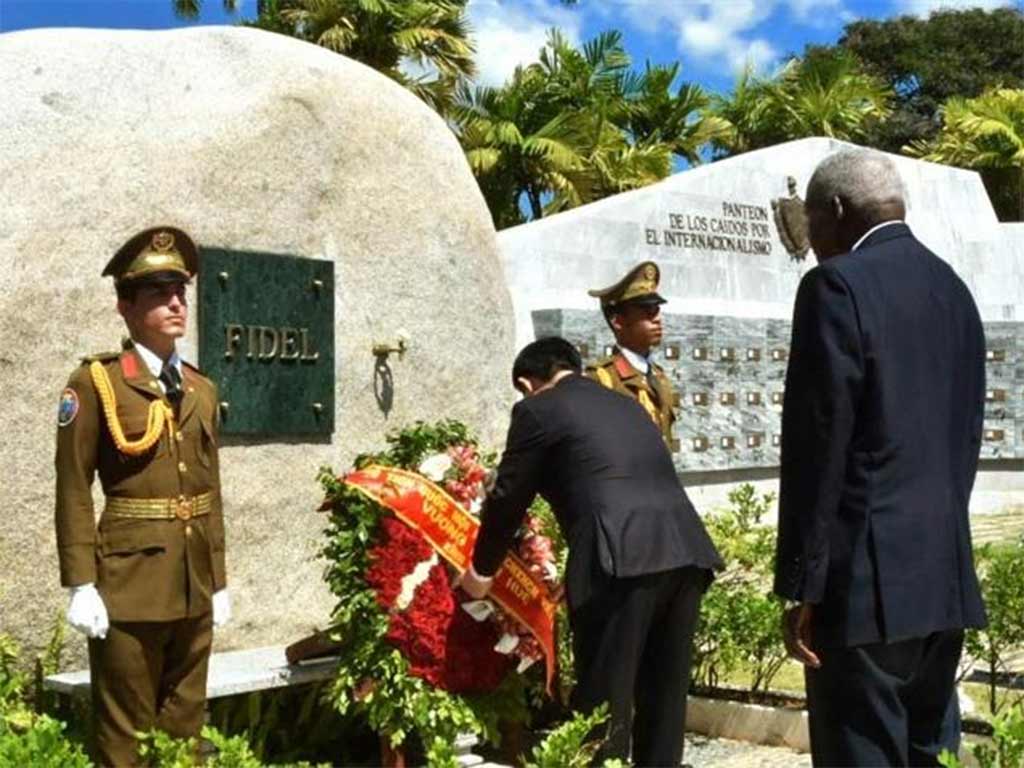At the Heredia Theater, artists from Santiago and Vietnam gathered to celebrate the 50th anniversary of Fidel Castro’s visit to the lands liberated by the people and soldiers during the war imposed by the United States, and 60 years of the Friendship Association.
On Sunday, when the official delegation departs from the Antonio Maceo International Airport after five days of active interaction with Cuban authorities, there will be displays of affection that began with the welcome from the leader of the Revolution, Raul Castro, and President Miguel Diaz-Canel.
Since the delegation’s arrival in Santiago de Cuba on Saturday morning, tribute was paid to the heroes of independence at the Santa Ifigenia patrimonial cemetery, and before the monolith that keeps of Fidel Castro’s ashes as a focal point. Solemnity marked the ceremony with the patriotic halo that encloses.
It is precisely the legacy of the historic leader of the Cuban Revolution that is the greatest inspiration for Cubans of several generations to maintain intact their admiration for a people who have given so many lessons in heroism to the world and are currently doing so in the construction of their Socialism.
Despite geographical distance and different languages, Cuba and Vietnam have built a friendship that has withstood any situation in more than 60 years, and the photo that welcomed the Vietnamese delegation on the front stairs of the former Moncada Barracks, turned into a school, is proof of those ties.
The former military fortress, which Fidel Castro and young revolutionaries stormed on July 26, 1953, in an effort to overthrow Fulgencio Batista’s tyrannical regime, contains much symbolism in the Cubans’ struggle for their sovereignty.
Saturday’s climax of confirmation of solidarity and nobility was the delegation’s visit to the Cuba-Vietnam Friendship special school, which was inaugurated four years ago by Army General Raul Castro and President Miguel Diaz-Canel.
There, the effort to restore hope to children and adolescents with disabilities, and their families, moved the visitors, who donated a batch of electronic learning media, jams and toys to students and teachers.
Another step in the rapprochement was the signing of a letter of intent on the twinning between the cities of Holguin and Santiago de Cuba with Quang Tri and Quang Binh, respectively, which were part of the free territory visited by the Cuban leader.
There was also a round of talks between local authorities and the visitors in search of new possibilities and potential to take joint economic actions to improve the both peoples’ lives.
jg/ode/mca









